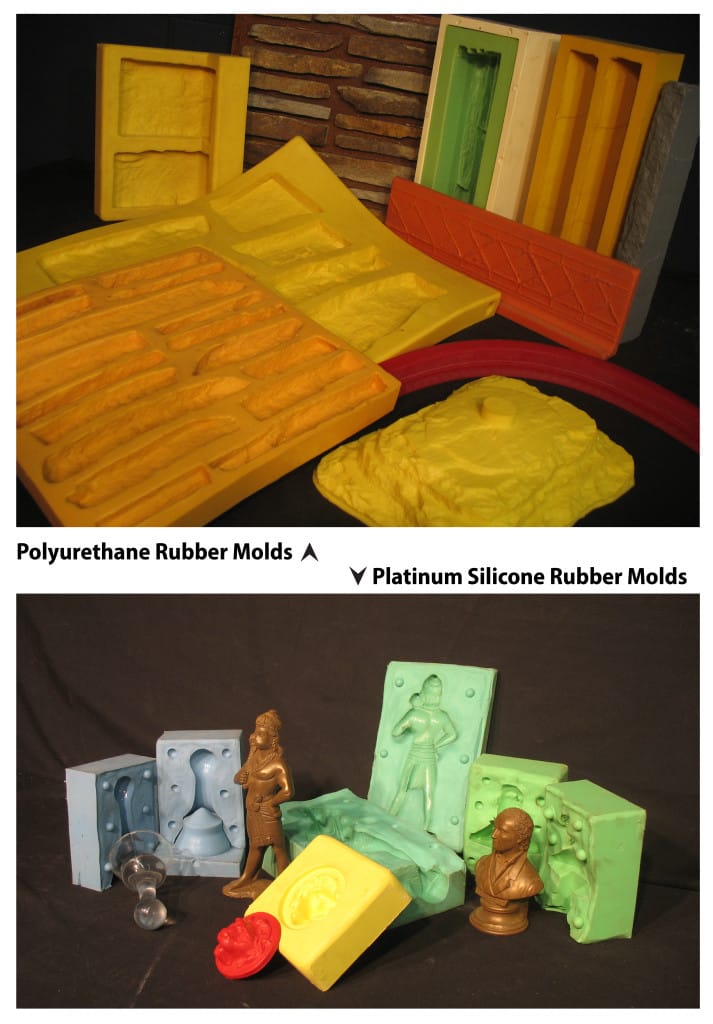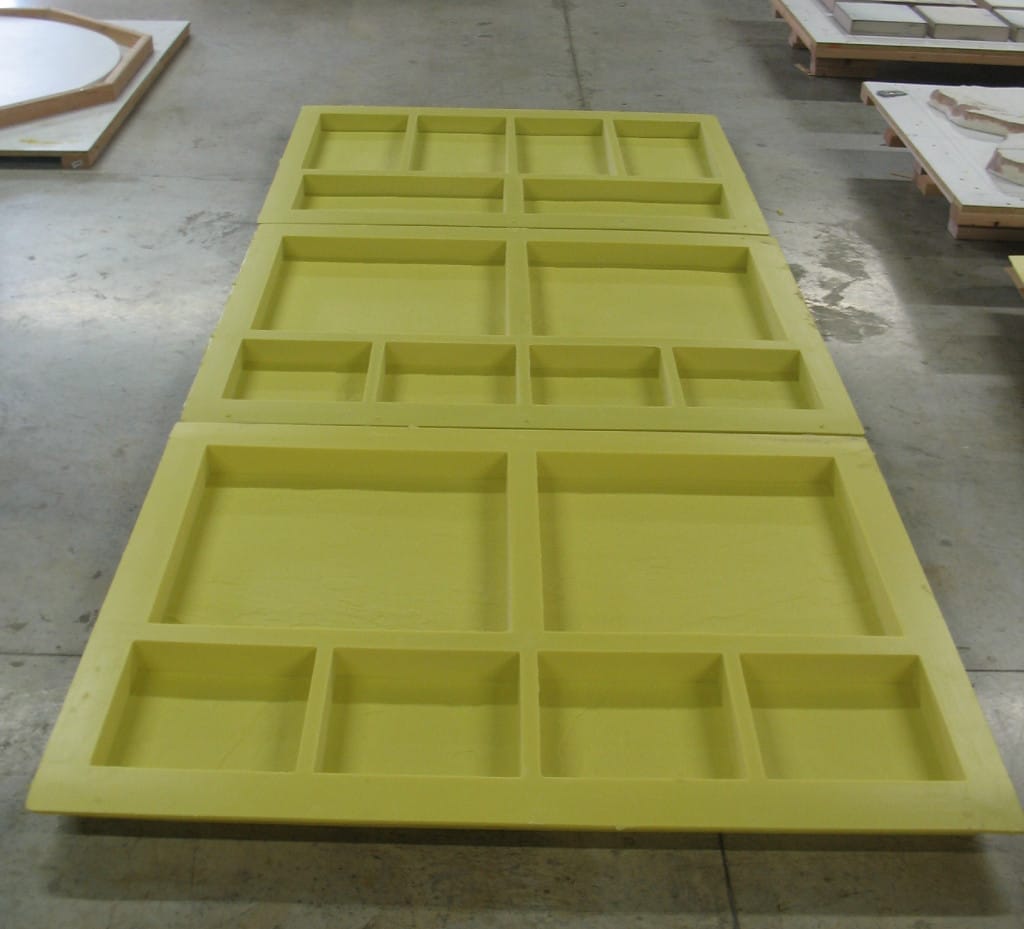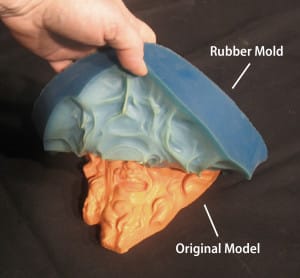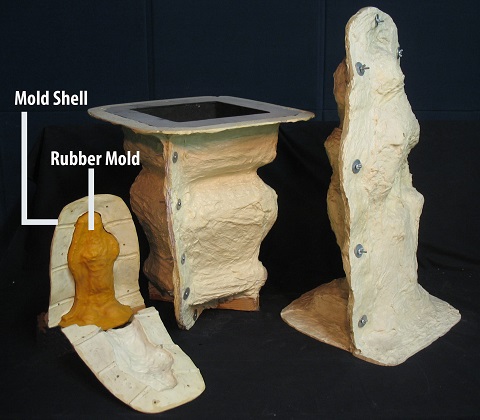Tek-Tip: How to Store Rubber Molds to Extend Library Life
The Library Life of a rubber mold is the length of time a rubber mold will remain useful after being placed in storage. When properly taken care of, molds can have a library life of up to 10 years or more.
Rubbers with Long Library Life
If long library life of a rubber mold is required, consider polyurethane rubber or platinum-cured (addition-cure) silicone rubbers. Avoid tin-cured (condensation-cure) silicone rubbers as they only last two to four years depending on conditions. Also avoid Poly-Fast 72-40, a polyurethane rubber that degrades quickly in storage.

[a small sample of Polytek polyurethane and platinum silicone rubbers]
Store in a Cool, Dry Area
Store molds in a cool, dry area and out of sunlight. These mold rubbers are not UV-resistant and will chalk and yellow when exposed to sunlight.
Store Molds in Original Shape
Store molds in their original, undistorted shape. If rubber is left in a distorted position (e.g., a corner is curled up, the mold is placed over top of another object, an object is laying on top of the mold) for any length of time, it may never recover to its original shape.
Store block molds flat and do not stack them on top of or underneath other molds or objects:

Store brush-on or poured blanket molds in their mold shells (also known as mother molds):
Some complicated blanket molds should be stored with the original model in place as the mold may collapse in on itself over time and in certain circumstances. In these cases, and depending on the material, the model may need to be sealed to prevent migration of oils between the model and mold. For instance, when you have a blanket mold that is stored in a mold shell made of porous material (e.g., bare plaster), the mold shell surface that is in contact with the mold should be sealed (e.g. with shellac). Distortion can occur from migration of oil between the two.

Two-piece mold shells should be secured together with the proper hardware for storage:

Don’t Mix Rubbers in Storage
Do not allow molds made of one type of rubber to remain in contact with molds made of other rubbers when in storage. This even applies to rubbers within the same series; for instance, don’t allow one polyurethane rubber (e.g, Poly 74-20) to rest against another polyurethane rubber (e.g., Poly 75-80) in storage. This may cause migration of oils or plasticizers which can cause swelling, shrinking, or distortion.